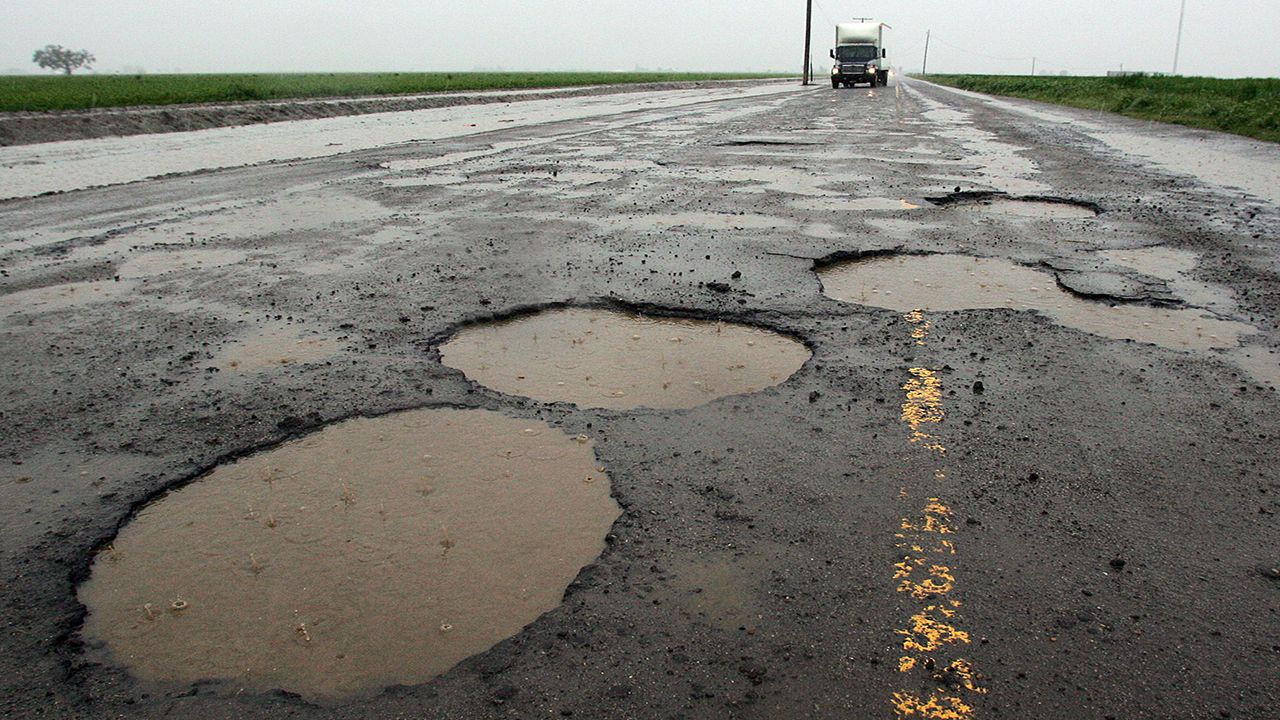Potholes are a real pain, and sometimes they are even a danger to drivers. While they can occur any time of the year, it's the winter weather and spring thaw that can wreak havoc on our roadways.
What You Need To Know
- Potholes occur year-round, but winter weather accelerates their development
- The freeze-thaw cycle of water is the main issue
- Potholes cause over $6 billion a year in damage across the United States
After a snowy and cold season, it can sometimes appear that potholes pop-up seemingly out of nowhere. Roads that were once smooth are suddenly the asphalt equivalent of Swiss cheese.
To better understand why this happens, let's first break down the roads themselves.
Starting from the surface and moving downward, most roads consist of small rocks compressed with tar, followed by small stones, and finally soil. That upper layer is supposed to repel water, but that eventually breaks down over time from heavy traffic, age, and weather.
Eventually, time takes its toll, and roads start to crack.
These cracks allow water to penetrate the sublayers and wear away at the foundation that holds the smooth surface together.

Think of it as removing a load-bearing wall from a house. All it takes is some heavy traffic to break the barrier, and overnight (or day), a cracked area can become a pothole. This can occur any time of the year.
The problem in the winter is how freezing temperatures affect ground and surface water. As water freezes, it expands then condenses as it cools. Above 40 degrees, water expands.
But, the range between 32 and 40 degrees gives water a unique property as it contracts. The back-and-forth freeze and thaw cycle frequently happens in the winter across much of the US, which causes cracks and potholes to occur often.
Add salt to the mix (which lowers the freezing temperature of water), and this cycle can continue through relatively mild and extremely cold winters just the same.
As we all know, potholes are not only an annoyance, but a danger as well. Snow, ice, and dirt can accumulate in them, hiding how deep they are.
In some cases, deep holes can form in a short amount of time, destroying tires and causing massive damage to any cars that roll over them. A recent study found that potholes cost American drivers over $6 billion in damage each year.

Because the freeze-thaw cycle in the winter is such a detriment to roads, crews usually have to wait until spring to repair potholes. Once the temperatures are a little milder, crews can repair the potholes more efficiently and safely.
Most cities and towns will temporarily fix a pothole in the winter (we'll call it patchwork) and make more semi-permanent repairs in the spring and summer.
The good news is that as technology evolves, scientists and civil engineers continue to find more advanced solutions and fixes for those frustrating and dangerous potholes that plague us.
If you see a new pothole on your route or commute, you can report it and request a fix by contacting your local Department of Transportation.



